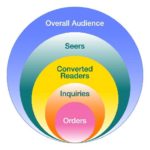The Bob Dylan song The Times are a Changin, released in 1963 was about change. Revolution. Evolution. Whatever you’d like to call it.
It reflected the serious social upheavals taking place during that time, with stern warnings.
Notices like “You better start swimmin’ or you’ll sink like a stone” and “Your old road is rapidly aging” was about the rapid social changes going on in front of our eyes. It was sort of call to arms, if you will – change, or be massacred.
The philosopher Heraclitus of Ephesus knew about change way before Bob Dylan expressed it.
Heraclitus compared change to a river. Ideas like “you never step into a river in the same water” became part of his “all things are a flowing” philosophy. He concluded, rightly, that everything is constantly shifting, changing and becoming something other to what it was before. Antoine Roquentin, a character in a Satre novel, experienced change; the change was so overwhelming, his experience became the title of the novel for what he felt when he felt change: Nausea.
It makes you wonder why people still find it difficult to accept change. Or rather, resist it so much.
Dylan’s Song is the Theme Song of the Internet
The difference between Heraclitus, Dylan and now is that you can see change now. You couldn’t always see it before. Oh, you may have felt it in some ways. Or seen it in some events. But the internet, which actually is like a river, now delivers change instantly, right before your eyes. Simply hit Refresh.
Information and Change
What we’re talking about, of course, is information and its ability to institute change almost instantly.
At a recent networking meeting, my presentation to the group focused on information and how it is created, distributed and consumed, only to be revamped and distributed again. All change is born within information, and the Internet consumes it, distributes it, and holds it forever.
I showed the graphic of overlapping circles to the group and told a story.
Pre-Internet Period
“Once upon a time during the pre-internet period, the world was organized where media outlets controlled that largest, most important circle, the overall audiences. During those days, the outlets had subscription-based or controlled audiences that sellers of stuff wanted to reach. Some of the outlets required a device (TV, radio, magazine) to reach the audiences they held captive.
“During the pre-internet, a seller would buy ads in a newspaper and reach the audience of that newspaper. Or a magazine. Or a billboard. Or a TV or radio show. Each had an audience attached to it, and that was the way to reach that audience.
“When you ran a message some people saw it, some people who saw it read it, and some people who saw and read it inquired. Then some placed an order. On a radio commercial, for example, if you provided a phone number, that phone might ring during the commercial. Or it wouldn’t. It was all neatly organized.
Post-Internet Period
“The post-internet world changed all that. The internet became the channel and allowed all of those audiences to escape. In a very real sense, once they escaped the media outlet’s chains, they took control of the communications. They ushered in what we now call the Age of the Customer. It was a profound shift in who controlled the content from media outlets to the audiences themselves.
“The customer – the audience – is now largely in control of the content by selecting what they want to listen to or read and where they want to do the listening and reading. That is, the customer (consumer) hops on the Internet and goes where they please and when they please, and often, becomes the publisher of content. They consume what THEY want, not what the media outlet serves them.”
Revolution
The media outlets didn’t know what hit them. Many today still suffer from the change. Channels like Facebook and Twitter emerged, taking vast numbers of consumers away from traditional outlets. In fact, even these new outlets have no true control over audiences (though they say they do). They may hint that they do, but the post-internet period is fraught with fraud: audiences which look real may not be real at all.
This presents a serious problem is measuring effectiveness of communications and finding customers.
Audience chaos is the result.
This profound change in the process puts the customer in total control of what they want to consume, and the traditional and newer outlets now fight that control. They have to. Once the audiences realize the extent of their control, all of the outlets will be helpless because everyone will be a publisher, a media outlet in and of themselves. The dirty little secret is that the audience gives the media outlet or channel its power — not the media outlet or channel itself. And the media outlets and the channels know this. Without an audience, how do you drive revenue?
Instead of being “presented to,” the consumer/customer will be the one presenting. Instead of being served information, the consumer/customer will broadcast information by hopping on the internet or a social media channel and start communicating. Or listen to others — anyone — not just a media outlet. Everyone, in essence, is a reporter. Or a storyteller. Or…
Revolution.
Lead Generation Today
During my presentation, I asked the participants around the table how they were generating and nurturing leads in this disruption going on. After all, if the traditional ways of generating and nurturing no longer exist, how do businesses find new business? The answers varied and here is a summary.
- LinkedIn. One person said he uses LinkedIn and has gotten business by networking through that channel. Others agreed. Others didn’t. LinkedIn has emerged as the professionals’ channel for “talking to” others of a similar ilk. People you haven’t thought of for awhile suddenly can emerge on the channel, attempting to re-connect in the hopes of drumming up business. Or just talking. But, not everyone uses LinkedIn. Some people check it once a month. Others live on it. That represents a problem for lead generation.
- Lists. Some people still continue to purchase lists, without much result. The problem with lists is they atrophy rapidly (there’s that change element again!). In our work, we actually see professionals like architects creating “fake” emails to avoid being bombarded by manufacturers’ emails. But, a list – one that is carefully standardized and maintained – is a company’s greatest asset. The problem is time – the time it takes to do that work. However, the benefits in efficiency are enormous. In one instance, we took the bottom of the “frequency” sort (the customers that haven’t been doing business with a client frequently) and simply sent out an email talking about our client’s latest product. “I didn’t know you did that” was the majority of responses from that campaign – proof that all too often, even our own well-kept lists do not know all we do.
- Acting Fast. The internet, as pointed out, speeds things up and gives change the ability to be seen, heard and felt. Unlike the old days, people seem to want an immediate answer even when an immediate one can’t be obtained. For example, one of our clients uses another agency and commented that it takes a couple of days to obtain a response from that resource. Usually the response is a question about the assignment. “Anticipate, React and Adapt” was the philosophy of Alexander the Great, and it is appropriate for the world of change we occupy. It’s the anticipation wherein you can build an advantage, as we did in a recent project that began as research and expanded to include – because we acted quickly and efficiently – building a temporary re-design of the client’s website as a result of the research we were doing. Marcus Luttrell wrote in his Lone Survivor: “The SEALs do place a premium on brute strength, but there’s an even bigger premium on speed.”
- Open Rates. Another part of the discussion was about “Open Rates” and how disappointing these were for one of the participants in my group. Mailchimp is one of the platforms that sends billions of emails a month for millions of users. They track a lot of data. Their customers range from 1-person startups to Fortune 500 companies. So the whole spectrum is represented. They offer a convenient comparison chart, but the average open rate for all industries they analyzed was 20.81%. You can find this comparison chart here. Our own opens vary. For one client, they are between 9% and 32%. For another, 43% to 86%. It has a lot to do with the content as well as the list. When you combine both of these with a good offer, you are almost guaranteed to beat the average. The operative word is: test. You have to, as in the old days, test your offers and your approach until you get an acceptable “control.” What’s acceptable? Again, it has to do with the content and the list you are using.
- Content. In this age of change, content is king. Frankly, the more content you have, the better. Google, do not forget, reads everything. Even long content is excellent. Because you are on the internet, which is changing constantly, you have to put your content into play. That means having a blog posted. It means posting in your platforms like LinkedIn. The truth is, you can never have enough content. The group talked about the benefits of posting and how time is the critical factor in creating posts.
- Other Media. One of the participants (in real estate) talked about investing in radio commercials on a certain station and how that station could not provide the demographics of the audience. Her investment was considerable. When she showed up at one of the events for which she was sponsoring, people came up to greet her and recognized her from hearing her radio commercials. She did not sell any real estate — yet. The point was she received exposure to a specific audience but didn’t know it. In one of our short videos about direct marketing, I explain the importance of the list and the audience. This is also true of radio. And it is also true of other tactics; in this disruption, it is sometimes impossible to tie an effect to a cause.
One of the things we realized when we started our business is an old rule that’s still extremely relevant: Adapt, Change or Disappear. Because we have been able to adapt and change, we are still standing. If you look around (i.e., one example of the inability to change is the great article in Fortune on Sears called Sears’ Seven Decades of Self-Destruction), you’ll see just how important it is to change.
So what are you waiting for?
Thanks for reading! Let us hear from you on how you are handling change!


Gary, it was a pleasure to present. Dylan could say that he did it for the money because he made money doing it. True artists don’t do things for money. They do it to do it. I was never a Dylan fan; there are plenty of other 60’s musicians that were “better.” But as the saying goes, “De gustibus non est disputandum.” Thanks for reading this!
Jim, Thanks for posting this blog for people to learn from and enjoy. And, thank you for the presentation you made to our networking group and the preparation it took to make it so effective. I liked the Bob Dylan reference. No singer of the sixties and beyond created more change than Dylan. However, on a PBS program he was asked the meaning of his music and how he thought it influenced the population. He said he did it for the money. He made a lot of it too!